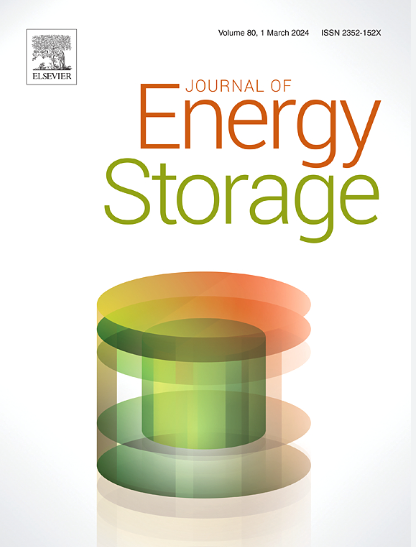A combined and substituted use of battery electric vehicles and hydrogen storage in residential nanogrid configurations
IF 8.9
2区 工程技术
Q1 ENERGY & FUELS
引用次数: 0
Abstract
Renewable energy systems consider energy storage against uncertainties of weather resources and customer demands. Battery energy storage dominates recent renewable energy-based system developments. Factors for the battery dominance include the extended life-cycle, high energy density and low per unit kWh cost. However, hydrogen storage had a significant drop in per kWh cost and longer periods of energy storage. Electric vehicles have a high percentage of lifespan spent parking implying low energy storage usage. This paper investigates the technoeconomics of a residential nanogrid's energy storage system configured using battery, electric vehicles and hydrogen fuel cells. The Photovoltaic/Wind/Storage nanogrid configurations were optimized using nested integer linear programming with energy storage planned in combined and substituted modes for cost and capacity benefits. A scenario-generated analysis is used against renewable resource and customer demand uncertainties to determine the feasibility of the system's cost/capacity benefits. The nanogrid's energy costs in substituted storage were 44 %, 22 % and 39 % in battery, electric vehicles and hydrogen storage lower than the combined storage's 0.0018 $/kWh. The substituted storages are 30 %, 24 % and 44 % lower than the combined storage's $111,330 annualized total cost. However, hydrogen storage's 65 kW capacity is larger compared to electric vehicle's 55 kW and battery's 50 kW. Electric vehicles are envisaged to have better economic advantages under optimal load management.
可再生能源系统需要考虑储能问题,以应对天气资源和客户需求的不确定性。电池储能在最近的可再生能源系统开发中占主导地位。电池占主导地位的因素包括寿命周期长、能量密度高和单位千瓦时成本低。不过,氢气储能的单位千瓦时成本大幅下降,而且储能时间更长。电动汽车的使用寿命中用于停车的时间比例较高,这意味着储能使用率较低。本文研究了使用电池、电动汽车和氢燃料电池配置的住宅纳米电网储能系统的技术经济性。利用嵌套整数线性规划对光伏/风能/储能纳米电网配置进行了优化,并以组合和替代模式规划了储能,以获得成本和容量效益。针对可再生资源和客户需求的不确定性进行了情景生成分析,以确定系统成本/容量效益的可行性。纳米电网的替代储能成本为 44%,电池、电动汽车和氢气储能成本为 22%,比组合储能的 0.0018 美元/千瓦时低 39%。替代储能的年化总成本分别比组合储能的 111,330 美元低 30%、24% 和 44%。不过,与电动汽车的 55 千瓦和电池的 50 千瓦相比,氢储能的 65 千瓦容量更大。预计在优化负载管理的情况下,电动汽车将具有更好的经济优势。
本文章由计算机程序翻译,如有差异,请以英文原文为准。
求助全文
约1分钟内获得全文
求助全文
来源期刊

Journal of energy storage
Energy-Renewable Energy, Sustainability and the Environment
CiteScore
11.80
自引率
24.50%
发文量
2262
审稿时长
69 days
期刊介绍:
Journal of energy storage focusses on all aspects of energy storage, in particular systems integration, electric grid integration, modelling and analysis, novel energy storage technologies, sizing and management strategies, business models for operation of storage systems and energy storage developments worldwide.
 求助内容:
求助内容: 应助结果提醒方式:
应助结果提醒方式:


